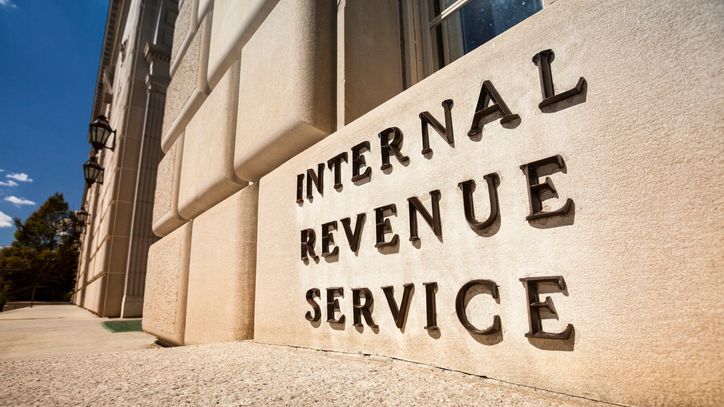Understanding tax payments and the potential repercussions of underpayment is crucial. The tax underpayment penalty is one such charge that taxpayers need to be mindful of. Simply put, this penalty is enforced by the Internal Revenue Service (IRS) when taxpayers fail to meet their tax obligations within a designated period. A financial advisor with tax expertise can be a valuable resource when it comes to tax planning and potentially avoiding underpayment penalties.
What Is the Tax Underpayment Penalty?
The IRS defines a tax underpayment penalty as a charge imposed on taxpayers who fall short of paying their total estimated income tax for the year, either through withholding or by making estimated tax payments.
For instance, consider an independent contractor who underestimates her earnings for the year, leading to insufficient quarterly estimated tax payments. Alternatively, a full-time employee who fails to adjust his tax withholdings after a significant pay raise may not be paying enough in taxes throughout the year. Such discrepancies might result in a penalty at the end of the year, which could add to one’s tax liability.
This penalty specifically applies when the total tax payments made during the year fall short of either 90% of the current year’s tax that’s owed or 100% of the previous year’s tax. For those earning a high income, this minimum required payment increases to 110% of the prior year’s tax.
How Is the Penalty Calculated?

The tax underpayment penalty works within a certain legal structure, governed by the IRS under Section 6654 of the Internal Revenue Code. Your penalty is calculated based on how much you underpaid when the estimated taxes were due, as well as an interest rate the IRS applies to how much you still owe.
The interest rate is set every quarter and is calculated for individuals by adding three percentage points to the federal short-term rate. For corporations who underpay, the IRS adds 2% to the short-term federal funds rate. As of the first quarter of 2024, the interest rate on underpayments is 8% for individuals and 7% for corporations.
To calculate an underpayment penalty, the IRS then multiplies the amount of unpaid tax by the quarterly interest rate. This calculation is done for the period from the return’s due date until the date of payment.
To illustrate, let’s consider an individual taxpayer who owes $5,000 while the federal short-term rate is 5%. The annual penalty is calculated as follows:
- Add 3% to the federal short-term rate of 5%, totaling 8%.
- Multiply the $5,000 owed by 8%, yielding $400.
For half a year of underpayment, the penalty would be reduced to $200. These figures may not seem significant initially, but they can add up quickly and impact a taxpayer’s financial situation. Therefore, it’s always advisable to fulfill your tax obligations promptly to avoid such penalties.
How to Avoid Underpayment Penalties

To potentially reduce the risk of underpayment penalties, several strategies can be employed depending on your specific financial situation. The IRS suggests taxpayers make quarterly estimated tax payments if they have substantial non-wage income, such as from self-employment or investments. Making these consistent tax payments throughout the year can reduce the chance of facing a large, unexpected tax bill in April, which can cause financial strain.
Another strategy includes increasing your tax withholding by adjusting your W-4 form with your employer. Additionally, if your income is received unevenly during the year, you may be able to make uneven payments to avoid or reduce penalties.
How you may go about avoiding an underpayment penalty will depend on how much income you have and how much in taxes you owe. Here’s a look at three different ways for avoiding underpayment penalties:
If You Make $150,000 or Less
For taxpayers earning $150,000 or less, there are specific guidelines to help avoid underpayment penalties. According to the IRS, you should strive to have your withholding cover at least 90% of the tax shown on your current year’s tax return or 100% of the tax shown on your previous year’s return. This approach can potentially help prevent a large balance due at tax time.
If You Make Over $150,000
For those with higher incomes, the guidelines differ slightly. Taxpayers with incomes over $150,000 must ensure their withholding and estimated tax payments cover at least 90% of their current tax year liability or 110% of their prior-year tax liability to potentially avoid underpayment penalties. This higher threshold reflects the larger tax liability typically associated with higher incomes.
Effective tax planning can serve as a helpful strategy for higher-income earners looking to potentially avoid underpayment penalties and manage their tax liability. Regular reviews of estimated tax payments and withholding may ensure you’re paying enough tax throughout the year. Furthermore, consulting with a tax professional or financial advisor can offer valuable guidance and help navigate complex tax laws and regulations.
If You Owe Less Than $1,000
Lastly, the IRS allows taxpayers to avoid underpayment penalties if they owe less than $1,000 in taxes after subtracting their withholding and refundable credits. This can provide relief to those who find themselves with a small balance due at tax time.
Bottom Line
Understanding tax underpayment penalties and their calculations is a vital aspect of managing one’s financial obligations. The IRS imposes these charges on taxpayers who fail to meet their tax responsibilities in a given year, and they apply to all income levels. The penalty is calculated based on the federal short-term rate plus 3%, compounded daily on the amount underpaid. This penalty can accrue interest over time, further increasing the financial burden. However, this can be mitigated through strategies such as making timely payments, increasing withholdings, and making estimated tax payments
Tax Season Tips
- You don’t have to wait until you file your taxes to get a sense of whether you’ll owe money or be receiving a refund this tax season. SmartAsset’s tax refund calculator can help you get a head start on your taxes this year. Meanwhile, our paycheck calculator comes in handy when estimating how much your take-home pay could be after receiving a raise.
- Working with a financial advisor who offers tax services may be what you need to take control of your tax strategy. Finding a financial advisor doesn’t have to be hard. SmartAsset’s free tool matches you with up to three vetted financial advisors who serve your area, and you can have a free introductory call with your advisor matches to decide which one you feel is right for you. If you’re ready to find an advisor who can help you achieve your financial goals, get started now.
Photo credit: ©iStock.com/Michail_Petrov-96, ©iStock.com/Pgiam, ©iStock.com/FG Trade Latin
Read the full article here
















